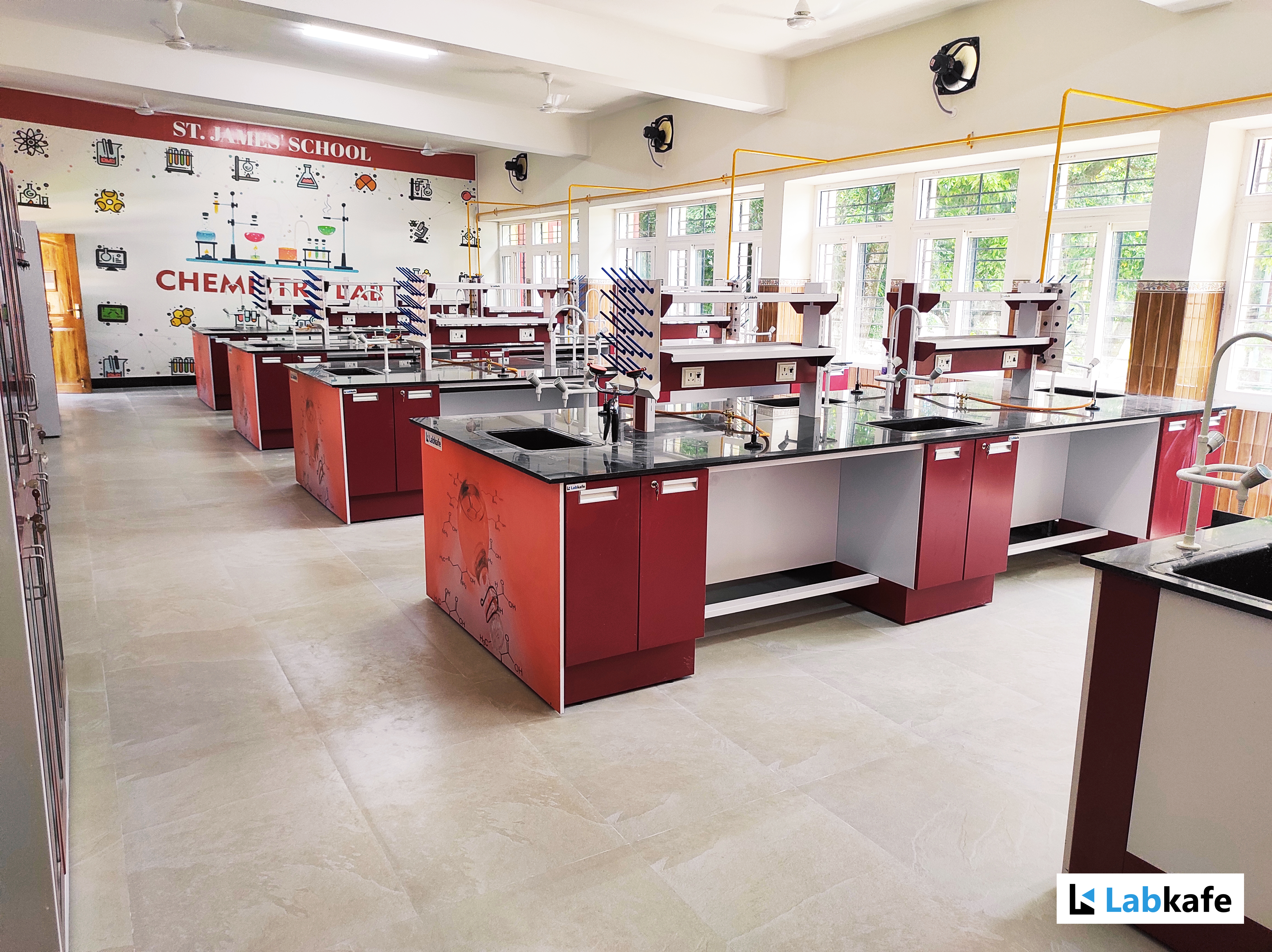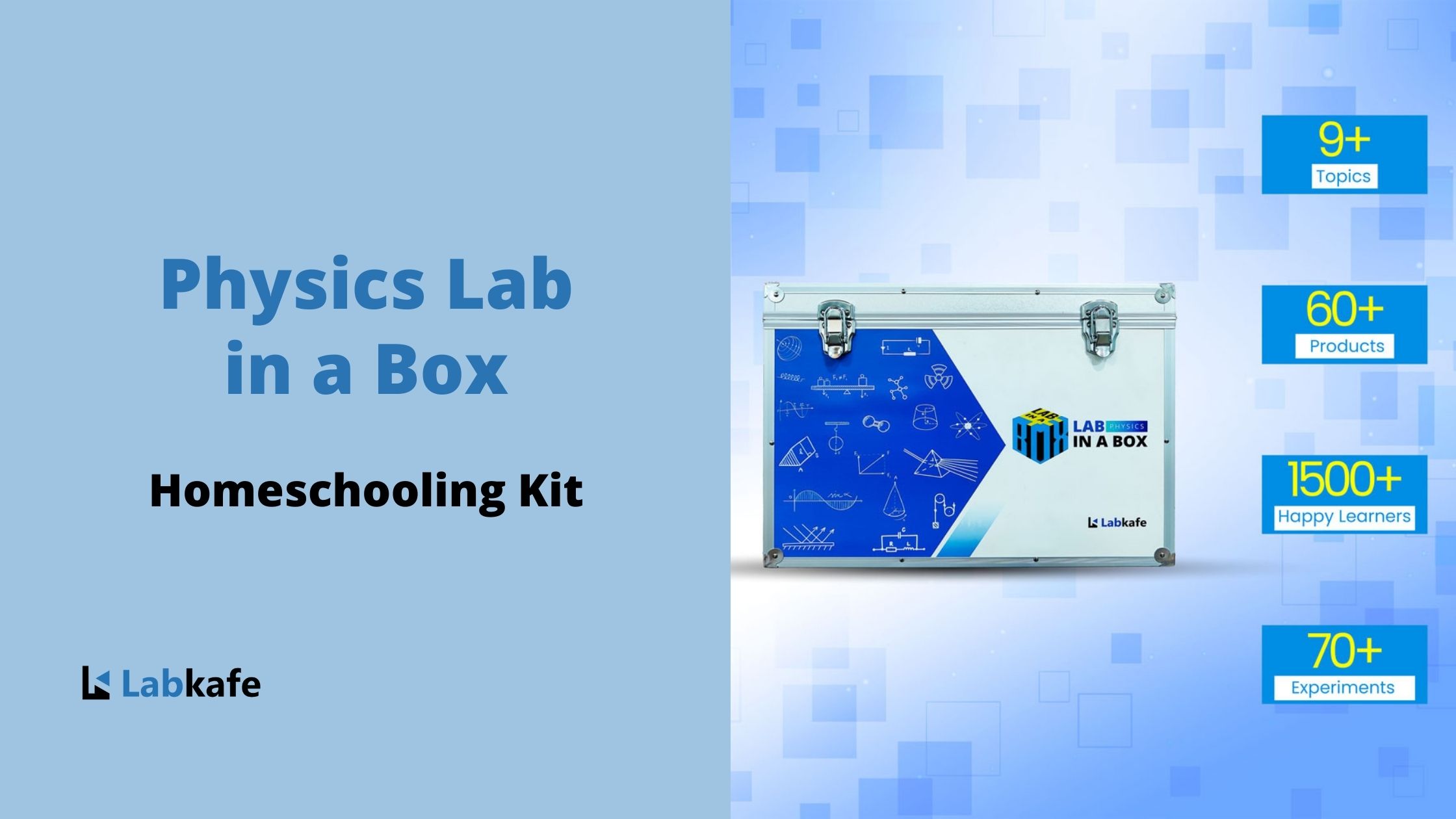A school STEM Lab is a dedicated space or room inside a school that is used to practice science, technology, engineering, and mathematics with do-it-yourself kits and with a hands-on approach. It is a mark of being future-ready and ensuring better and advanced education. Today, we will talk about Build a STEM Lab at your school with the help of STEM lab packages.
The concept of learning things by doing things is as old as mankind itself. The first man did not learn how to create fire by reading a book, they struck stones together and interpreted the results. When it comes to effectively learning something new, especially something from the science and technology sector, then the value of hands-on learning is beyond doubt and debate.
Any school that is geared towards bringing up youngsters with in-depth knowledge and understanding of scientific concepts will want to set up a stem lab in school. This dedicated area, also known as a makerspace, tinkering lab, or learning lab is excellent for youngsters to quickly digest basic and complex science concepts and develop a design-oriented mindset with great problem-solving skills and critical analysis.
Advantages of building a STEM lab
So far, young students have not been much better than educational zombies. They consume knowledge at a great rate ‒ even better since the accessibility of smartphones ‒ but they are stuck with being passive consumers. Not being able to use knowledge in action in real life cripples a person intellectually. A crippled mind is a devil’s playground for pseudoscience.
But at age, you can’t cure this. That is why to build a nation with a solidly firm scientifically-minded backbone, one has to teach scientific concepts with technological hands-on work from a very young age. In foreign nations, they start this process as early as grades 2 and above. Surely we can implement it at grades 6+ here.
A STEM (Science, Technology, Engineering, Mathematics) lab oriented education transforms a passive learner to an active creator. Makerspaces or STEM innovation labs in schools provide a perfect environment for young minds to glow bright with technical creativity. It takes learning beyond textbooks and into first-hand live experiences.
True, there already are physics, chemistry, and biology labs existing in school. But their scopes are limited and they are way too complex and specific for youngsters. Also ‒ old! To learn 21-century skills and technical know-how, you have to have a learning space compatible with modern skillsets ‒ creative and design-oriented thinking, critical thinking, problem solving, analytical mindset, etc.
But that’s not all. A STEM lab is more than just a personal playground ‒ it is a teamwork effort. It teaches students communication skills, empathy and resilience. And teachers can observe groups of students poring over a project and identify each one’s characteristics precisely, which is very hard in classrooms. So, STEM labs also help teach better and to fill out every student’s needs. No one will be left behind!
Moreover, obviously your primary concern is that your students find success in their future careers. To that end, you must know that industry needs in the job market have changed drastically in recent years. Even ten years ago, standard college degrees were good enough to get you a starting job ‒ but not anymore. Nowadays, companies require much more sound knowledge of 21st century technologies and soft skills, not to mention good communication skills and teamwork and analytical thinking skills. A makerspace is the best place to pick these up early in life.
How to set up a STEM Lab
1. Get the furniture
We don’t often think of the furniture when we think of a laboratory, but that’s hugely underrated. Properly configured work surfaces are what you will need to be successful. To that end, a STEM lab needs modular, sturdy furniture that are easy to move as well. They should include the following:
- General work tables (hexagonal or rectangular)
- Electronics workbench
- Soldering booth
- Tools and heavy work station
- 3D printing station
- Robotics workbench
- Robotics testing table
- Computer stations
- Teacher’s or lab instructor’s table
- Emergency booth
- Open and locked storage cabinets (could be integrated with other furniture)
- Rough mat to clean shoes
- Chairs or lab stools (as necessary)
Make sure the furniture are from a good, reputed brand.
2. Get STEM lab equipment
STEM labs need mostly DIY (Do-It-Yourself) kits and similar equipment. Labkafe provides full packages of such fun and easy DIY STEM kits for all levels; consult our STEM lab package page to learn more. These specially designed STEM classroom bundles provide all a child needs to begin his or her journey into the world of science, electronics, programming, and robotics.
3. Get other equipment
The basic idea behind a STEM lab learning is to make and break and make things again. And kids love making and breaking things. So make sure that your school STEM lab is well supplied with toy and diy construction materials such as glue, scissors, paper, tapes, cardboard etc. at all times. Once they get the motivation and the material, they become unstoppable.
The next part is to get computers. Since everything is online these days, computers with internet access have become indispensable. Kids will need them to get DIY videos, tutorials, manuals etc. Also, they can access online software like TinkerCAD etc. There are many resources available online that the STEM lab instructor also can utilize.
4. Get a 3D printer (optional)
They are costly, but they are fun and useful! 3D printers come in all shapes and sizes but you can make do with a basic one. With it, kids can build custom parts for their projects and make cheap prototypes for testing. Try getting a standard desktop 3D printer that’s good for small projects and visualizing complex concepts.
5. Ready the curriculums
You can bring all the furniture and materials you want, but without guidance all that would be useless. Prepare a proper STEM class curriculum for your lab (or get some resources that are available online). This will be useful for your lesson planning and also to let parents know what they can expect their kids to get involved in. This is a good idea since honestly STEM isn’t yet well-known in India yet and thus all kinds of guidance and educatives are welcome.
6. Create the atmosphere
A STEM lab is more than just the room and its content and its lessons. It is all about taking a holistic approach to make a wholesome atmosphere supporting innovation, concept absorption and creativity. An inspiring and supportive ambiance is exactly what kids need to grow their STEM skills. Without it, the lab will fail to nurture capable students and inspire others.
So, how to create such an environment? Firstly, visual stimulation works great, so give the room the best decorations you can that supports STEM work ‒ with colorful charts, infographics, instruction, pictures, even inspirational quotes and science symbols work well.
Secondly, hire somebody special to do the teaching. The STEM lab instructor/teacher should be playful, expressive, burning with curiosity and wise about the real-life applications of the concepts they would be teaching. They should remember that the school STEM lab is half learning and half play.
In a Nutshell
A STEM lab for schools is all about having fun while you learn. It requires a lot of enthusiasm to create what was not created, to make what does not exist, to explore the vast avenues of science and technology, and the drive to find satisfaction in creation. To that end, a STEM lab provides young students with all the 21st century skills that they need to survive the new world. These include design-oriented thinking, critical analysis, logical reasoning, creative approach, and problem-solving skills.
We know that setting up a STEM lab for schools is not an easy task. That is why Labkafe provides full guidance and hand-holding throughout custom STEM lab projects. We also smoothen the process by offering STEM lab packages with all kinds of DIY kits your young students will have fun tweaking. Come to Labkafe to set up your makerspace today!












Leave a Reply